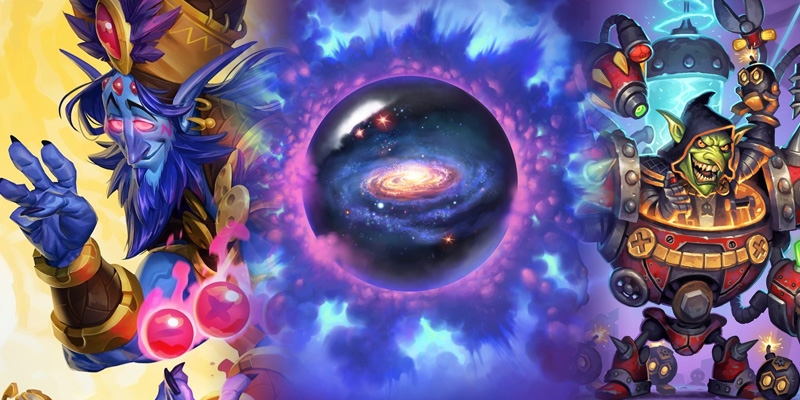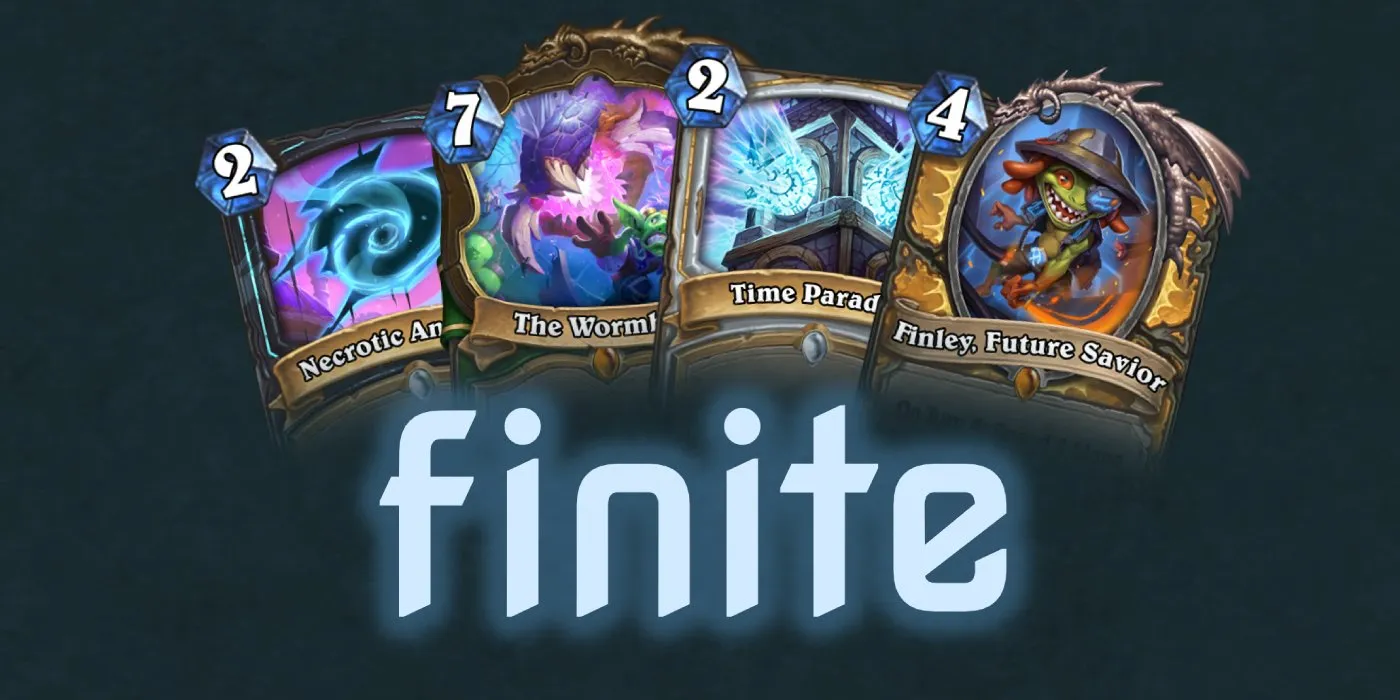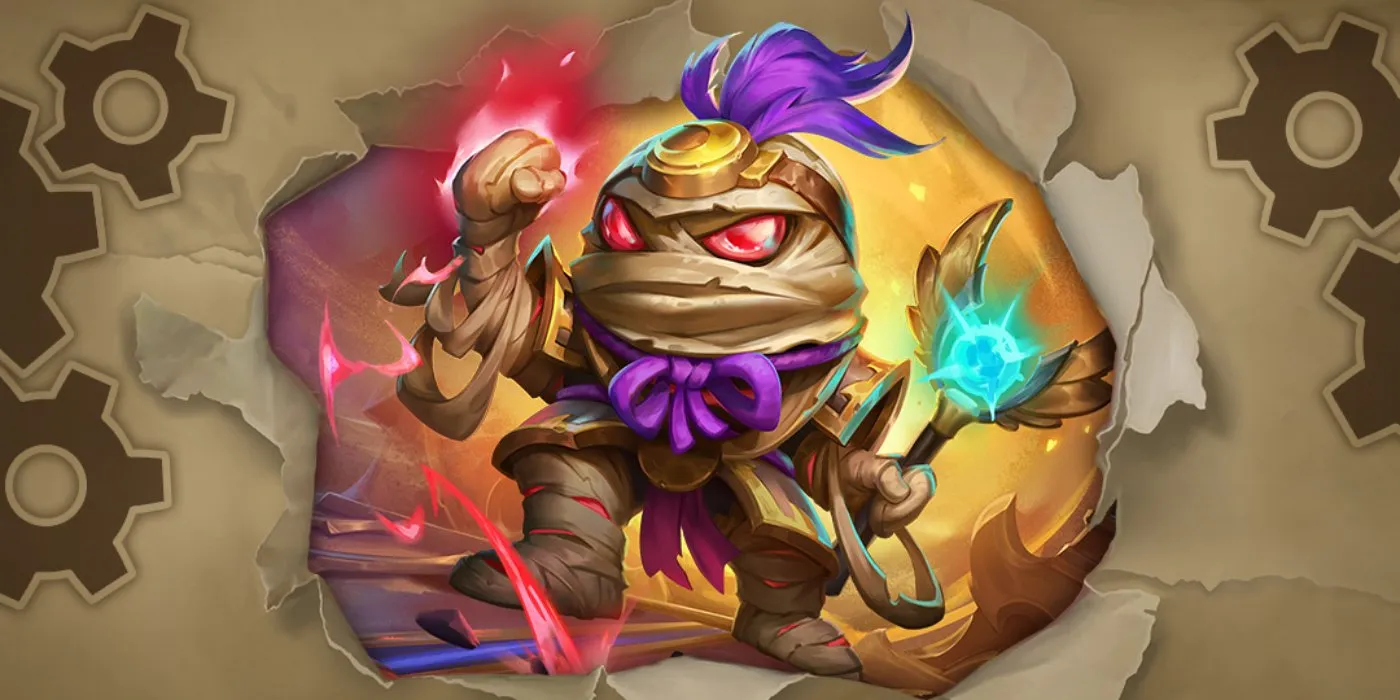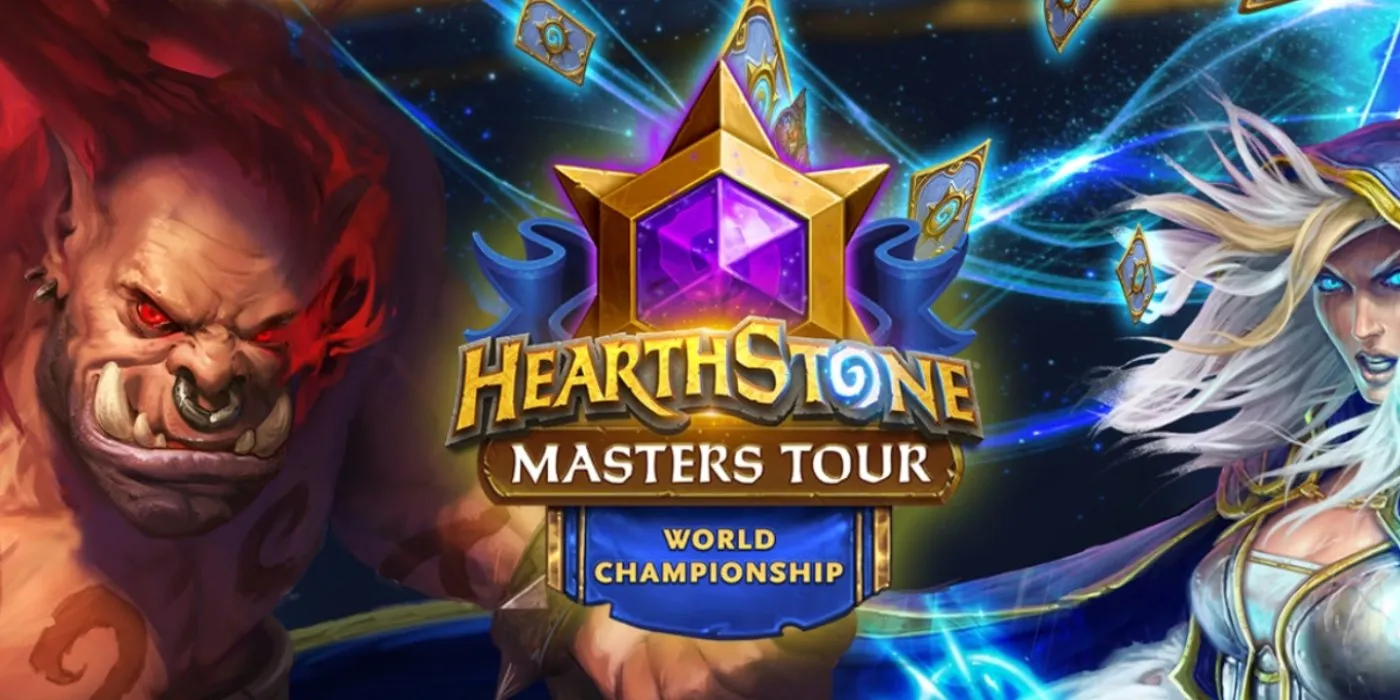Rock beats Scissors, Scissors beats Paper, Paper beats Rock.
Historically, all Hearthstone decks can be broken into 3 primary archetypes: Aggro (Rock), Control (Paper), and Combo (Scissors) decks. These overarching deck categories cover pretty much every deck that we have seen rise to popularity in each meta. In each metagame, Hearthstone decks of each type act as counterbalances to one another. My goal each week is to bring you a deck from each archetype that is performing at the top of the Standard Ranked meta with a brief overview, decklist, and how to beat these decks. The rule of Rock, Paper, Scissors defines which matchups are favorable and which are not, however, any deck can win any game if you play to your outs and understand your best chance to win a game.
Goals of Each Type
- Rock (Aggro) - defeat your opponent with early minion damage, board presence, and direct damage via minions or spells from hand.
- Paper (Control) - defeat your opponent by running them out of resources; health, minions, spells are all resources.
- Scissors (Combo) - defeat your opponent by playing cards which combine to create powerful effects for One-Turn-Kills or massive board-swings in single turns.
Weekly Overview
With the release of Saviors of Uldum, the metagame is still wildly cycling from day to day and will still take some time for the best decks to be refined and the meta to settle into a predictable state. This week's "Rock, Paper, Scissors" features the 3 most dominant decks in the current metagame. We feature 2 decks which are quite similar to their previous versions in Control Warrior and Conjurer's Calling Mage. The final deck is a new Murloc Paladin archetype that is the dominant aggro deck of the week.
Rock - Aggro
The term SMOrc comes to mind when I think of aggro (https://www.youtube.com/watch?v=-jenlSf2E8o)
Aggro is viewed as the most straightforward of the decktypes for a beginner to understand and play. Your goal is to kill your opponent before they have a chance to stabilize the board, keep their life total outside your damage from hand, and you run out of cards to play. Your goal with an aggressive deck is always to balance how much damage you are dealing to your opponent each turn and fight for control of the board at each stage. Aggro thrives against Combo decks which sacrifice board presence, removal, and healing in order to play powerful combinations of cards that can win them the game. Aggro suffers against Control which focuses on removing all of your minions, healing, and generating value so they have more resources at the end of the game.
Featured Deck of the Week: Tip the Scales Murloc Paladin
How to Play It
Murlocs have been an effective strategy in aggressive decks for a long time in Hearthstone. Murloc decks rely on putting a large number of murlocs on the board followed by buffs from Murloc Warleader, Coldlight Seer, and Grimscale Oracle, in order to deal damage to the opponent. If they run out of board clears you win the game. This deck relies heavily on the combination of Prismatic Lens + Tip the Scales, which will summon a full board of murlocs at a heavily discounted rate. You can find additional burst damage from Zephrys the Great and Sir Finley of the Sands once your deck is empty of duplicates. Additionally, Chef Nomi is your endgame condition to give you one final board once your deck is empty.
How to Beat It
This deck relies so heavily on the Prismatic Lens + Tip the Scales combination that if they never draw either you have a great chance at winning. However, this is unlikely, and they will flood the board with murlocs until they do draw one. Your key to winning the matchup is keeping in mind that they want to summon a full board of un-buffed health murlocs. You can tech in board clears with any deck to deal 2-3 damage and save it for when they summon a large board, this will let you get ahead on the board and keep the flood of murlocs in control long enough to deal lethal damage to the Murloc Paladin.
Paper - Control
Control is challenging because it takes practice to know what threats to expect from your opponent. The more knowledge you have of your opponent, the better you will perform. Control, typically, has a finite number of removal tools for individual minions and board clears. When playing this archetype each turn you have to ask yourself a few questions: Do I need to remove this minion/board right now? How can I stabilize this board to keep it from getting out of control? How do I prevent lethal damage from my opponents hand? By answering each of these questions, you learn when to clear a board and when to leave it, when you should be playing a taunt minion, and when you absolutely need to heal. Your end goal is how/when to stabilize and take full control of the game so your opponent cannot get back into the game. Control thrives against Aggro because eventually all Aggro decks run out of cards in hand or cards in their deck; meaning that if you can keep the board, they will run out of steam and lose. Control suffers against Combo because it often lacks proactive plays to deal damage to the opponent, allowing Combo to play their combo pieces whenever they want.
Featured Deck of the Week: Dr. Boom Control Warrior
How to Play It
If you love control and/or Warrior, there has rarely been a more dominant version of this deck. Anyone playing ladder at any level is familiar with the ever-present "Wallet-Warrior". Warrior has fantastic class cards in Shield Slam and Brawl to provide ever-present removal options. The constant removal in addition to armor mechanics that allow the warrior to gain health on top of their base health make Warrior incredibly difficult to kill. The key card that puts it over-the-top is Dr. Boom, Mad Genius; although after playing against it a few times, you are likely the one who is mad. Dr. Boom, Mad Genius gives all mechs played rush, making every minion in their deck a removal option. Dr. Boom, Mad Genius also allows the Warrior to discover more mechs, giving them even more removal. The Warrior will continue to play mechs, board clears, and removal until you run out of cards to play or cards in your deck. The final trump card is Archivist Elysiana which will shuffle 10 cards into their deck, while you start taking fatigue damage. A new taunt package in Armagedillo, Tomb Warden (which is a mech, by the way), and Frightened Flunky give the Warrior more resources to help them continue exhausting your resources.
How to Beat It
This is the hardest deck to beat in the game. They gain armor at absurd rates, making an OTK via damage much more difficult to achieve. Any aggro strategy must be careful to use resources incredibly frugally to make sure you don't run out. Most of the Warrior's strategy revolves around clearing your board up to 5 times with their board clears. This allows for decks which can make more than 5 big boards and deathrattle decks to win games in the long term. If you can create more boards than the Warrior can clear, you can win the game. If you can create situations where a board clear is not enough to win the board, you can win the game. However, you must play rather quickly, once Dr. Boom, Mad Genius gets going your odds go down dramatically. The deck with the best winrate against Control Warrior is the Quest Paladin which can develop endless big deathrattle mechs that the Warrior cannot clear, most other decks go even or struggle against this powerful edition of Control Warrior.
Scissors - Combo
Combo is sometimes classified more as a game of solitaire than a game of Hearthstone. Historically, combo decks are assembled in a way that once you complete each step, you win the game with a lethal in one turn, known as a One-Turn-Kill (OTK) deck. However, the current state of Hearthstone has very few decks which are capable of this. Most combo decks execute a series of plays to set up incredibly powerful boards by cheating out discounted cards or an infinite source of large minions (think Pogohopper Rogue and Conjurers Calling Mage). Combo decks thrive against control because the control deck often does little to nothing to threaten lethal against you. Combo suffers against aggro because by running combo cards, you sacrifice removal and healing; allowing aggro to beat you before you complete the combo. Once a combo deck has played it's combo cards, it is almost unstoppable.
Featured Deck of the Week: Luna's Pocket Galaxy Big Spell Mage
How to Play It
There are quite a few versions of the deck that are successful and vary in a few card choices. However, this deck has not changed strategy much with the addition of Saviors of Uldum. It still relies on getting as large a hand as possible to play Mountain Giant + Conjurer's Calling to develop incredibly large boards for as little as 6 mana. The buff of Luna's Pocket Galaxy to cost only 5-mana makes this the most powerful card in the deck, you can OTK your opponent or build a massive board over and over again. This combination of powerful discount effects is what makes the current version of Big Spell Mage so powerful. The final cherry-on-top of the deck is Puzzle Box of Yogg-Saron which can be used as an eject button or to generate additional resources, it may not have the best win-rate but it's certainly the most fun, new card in the deck. Your endgame, after stalling the early game, is a combination of [Hearthstone Card (Alexstraza) Not Found] + Kalecgos to reduce your opponents health and overwhelm them with a massive board built by Conjurer's Calling.
How to Beat It
Mage can take a long time to get online, which means that an aggressive strategy can lead to victory. They have limited healing via Zilliax and Ice Barrier, which makes dealing enough damage to them a distinct possiblity. The longer the game goes on, the harder it will be for you to close the game out. You can largely ignore their early-game minions to try to deal direct damage, except for Mountain Giant (which you should alwasy kill if you can due to the threat of Conjurer's Calling). By racing them to the finish, you are likely to win the game before they create a gigantic board to beat you. If they get an early Luna's Pocket Galaxy keep in mind that your job is much, much more challenging. If you are playing control against the Mage, keep track of how many big boards they can make and play your removal accordingly. You may also try to play more aggressively for damage with control if that is possible.
I hope you have enjoyed this week's edition of Rock, Paper, Scissors. Tune in next week for another 3 competitive decks of each archetype.
Have you encountered these decks or played them? Tell us about your experiences and share your thoughts below!




Comments
Nice article, thanks for the write up!
great article mate, thanks for sharing.
Nice article, Wookie.
I'm mildly annoyed with the decision making of naming the archetypes:
Rock should be control, where aggro (scissors) break on and combo (the odd one) is flimsy enough to be "cut" by aggro, but magically wins against rock.
Fully agree this should be changed, I had the exact same thought
It's real nice to have a daily hearthstone thread in which the comments are mostly positive. The article quality at OOC is great, do you guys have more wiggle room now you're behind the wheel?
I'm sure that Mage deck is fun to play - but I can confirm it's not fun to play against :)
Great article with background, definitions and guide. Thanks!
I'm only missing the armagedillo for the control one, is it necessary? can i replace it with something else? haven't played warrior in a while cause I hated the bombs.
It was the only decent legendary I got from the packs and used it since day one. I won't say it's a must craft since we are early in the meta yet, but sure is a great card. Unfortunately, if they nerf the deck it will be in a way that you won't get your dust back, as always. That said, for me the best card added in Sou is the plague followed by both taunts. As said before, maybe addind the second plague for now is suffice. Have fun!
It's not necessary nor game changing, but it surprisingly helps a lot because the opponent get's really scared and wants to clear it asap. More than once I was saved by a 7-6 Zilliax or froze the enemy with a wall of buffed up Tomb Warden.
You could put Into the Fray but I personally don't like it, or you could run another Plague of Wrath maybe.
Good article. But calling control decks challenging and then linking control warrior is kinda contradictory, wouldn't you agree? The deck basically plays itself.
That's why you will never get past rank 10
What is that even supposed to mean? You're not seriously implying that the current iteration of control warrior is difficult to play, are you?
Everyone complains about Dr.7, it IS a fundamental card in CW, but the deck still shines if you don't draw it... There is too much removal, either aoe or single targeted, and the things that really is a problem with CW is the brutal amount of removal, and the efficiency of it.
The problem with CW is not just the removal per se, but the removal on top of the removal: in other words, it's the insane ability of generating tempo while clearing the board.
Omega Devastator and Dyn-o-matic, two of the most powerful cards right now, are super good not just because you clear your opponent's threats, but because you have the chance to get rid of whatever survives too.
If you don't have Boom, your removals are technically halved, since you can't rush any mech you play and your opponent has bigger chances to develop a board and thus fight you.
Totally agree and that's what I meant, even with Restless Mummy it's just removal with removal. Being able to remove every single board is insane, and adding a body, with or without rush (with rush it just get's crazier), is an overkill combo.
Loved this article. Very good indeed. Thank you very much!
This is a very good article about three overpowered decks.
Well, I should say two. Paladin is a super high-roll "if I play Prismatic on 4 I'm likely to beat anyone without freeze/AoE" and mage is still utterly broken with giants + Conjurer's, alongside Galaxy and Tortollan. Warrior is just a very solid control deck with some rng from Dr. Boom (he's not broken; I beat the majority of warriors I face with hunter, regardless of if Boom drops on or after turn 7 or not).
I hope paladin dies on the vine, mage gets some nerfs, and aggro tries to remember that warrior is pretty simple to beat if you don't dump our resources out without a second thought.
Have you been playing the game in the last 4 months?